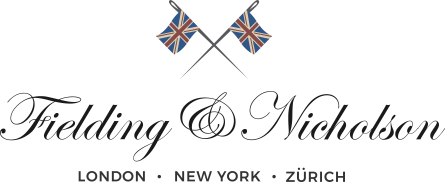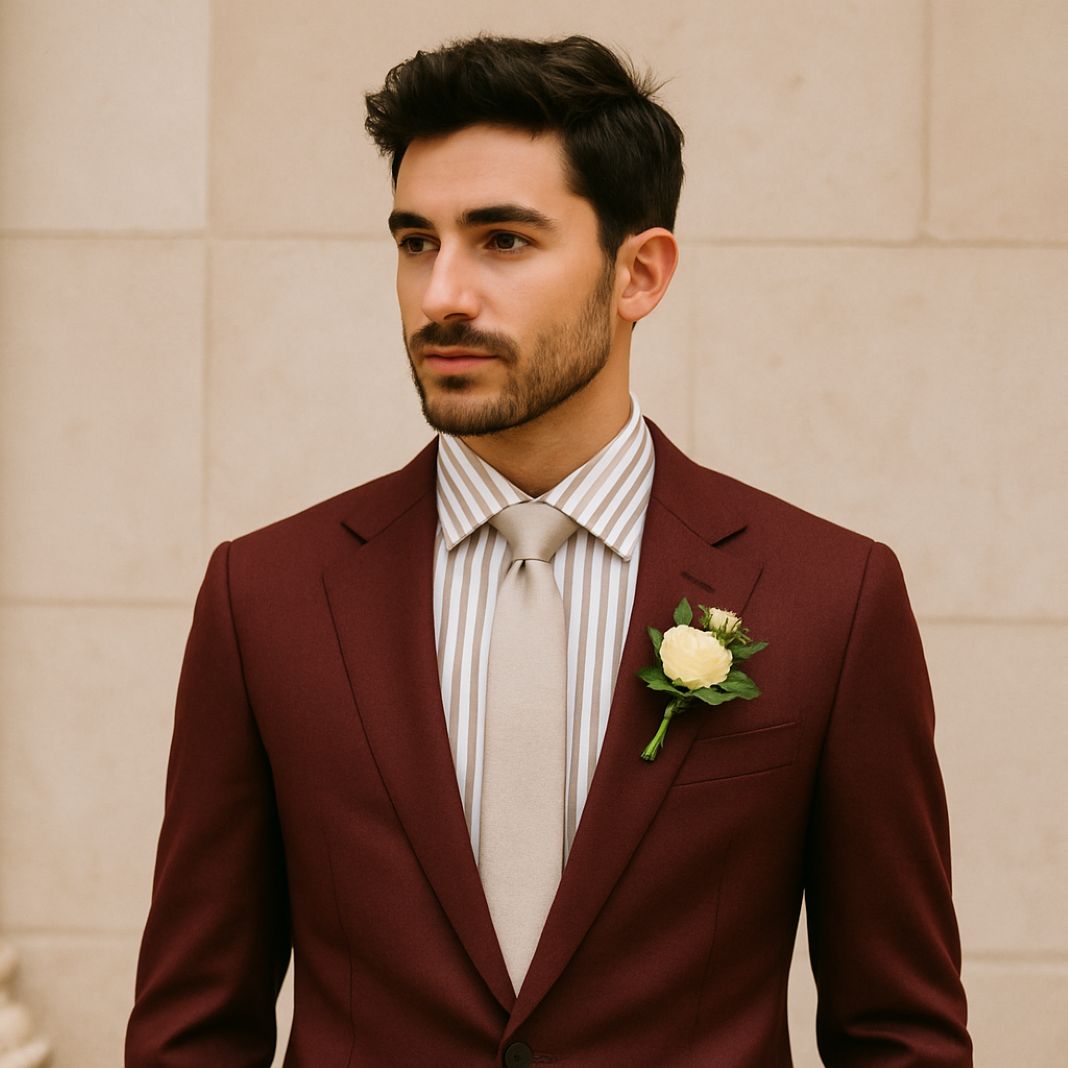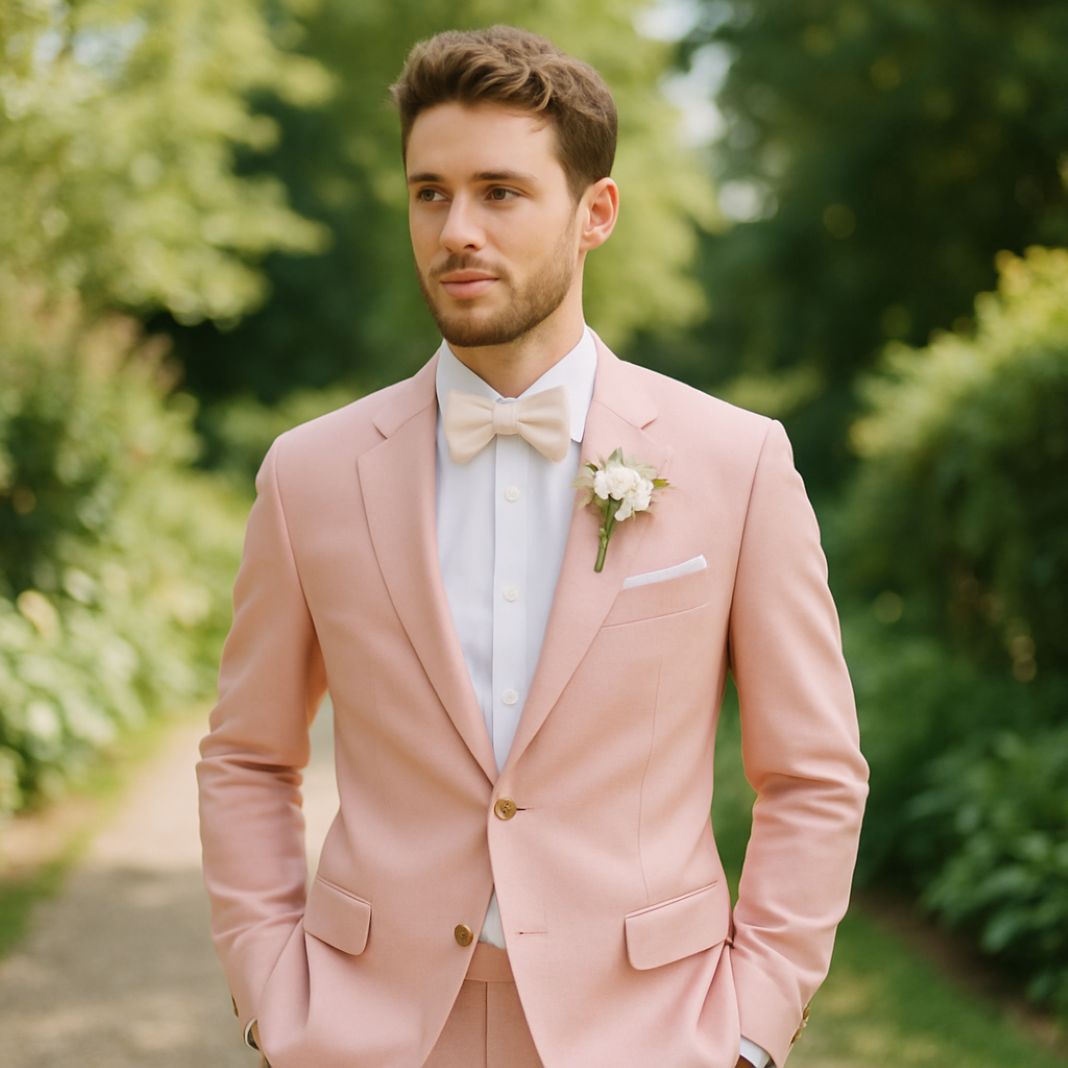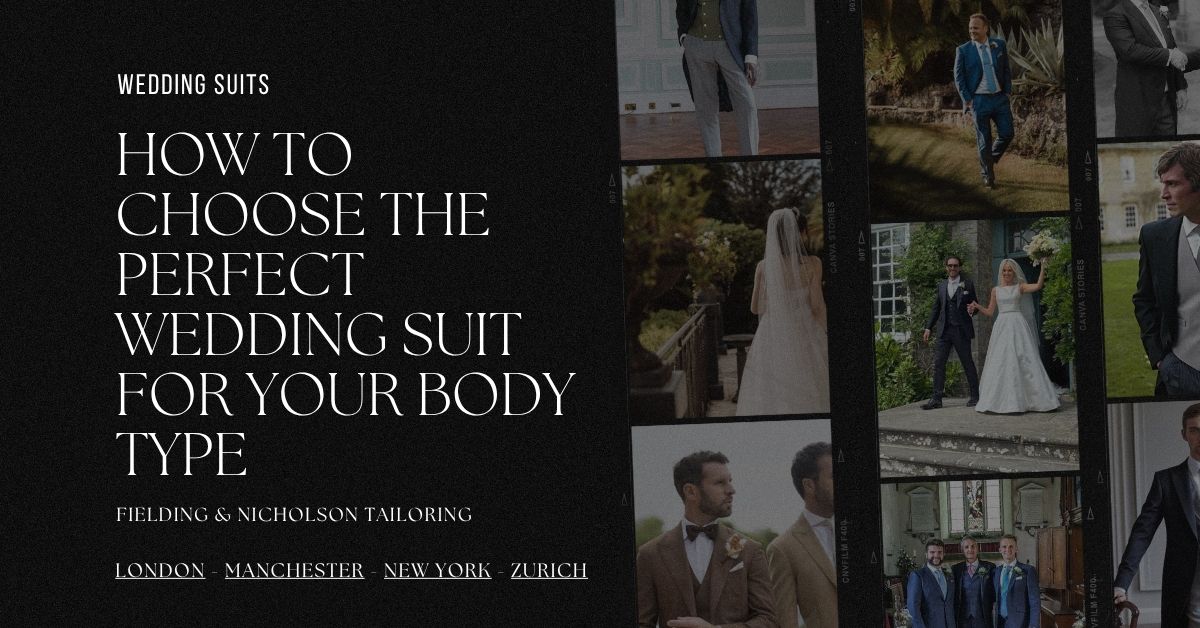How do you choose the perfect wedding suit for your body type?
Choosing the right wedding suit depends on how well it matches your build, personal style and how you want to feel on the day. Suits should work with your physique and move comfortably, whether you’re standing at the altar or dancing into the night. The right combination of cut, fabric and styling can improve posture, balance your proportions and support your overall presence.
Here's What We Have Covered In This Article
Why body shape influences wedding suit selection
Your body shape guides everything from jacket length to lapel width, button stance, fabric structure and even vent placement. A good suit works with your natural frame rather than against it. For example, a structured shoulder can sharpen the look for a slim build, while a lower button stance can help elongate an oval torso. These tailoring details help create posture symmetry, enhance physical proportions and improve visual confidence.
Wearing a properly fitted wedding suit improves how you carry yourself and how others see you. It affects body confidence and styling identity. Whether you are broad chested, compact, tall or carry more weight through the midsection, the goal is to support mobility, create visual balance and express personal style. Suits that match the body reduce common fitting issues such as shoulder gape, chest pulling, hem bunching or sleeve twist.
Pro Tip 1: Avoid buying a slim fit suit just because it’s trending. Match fit to your frame first, then work in your personal style.
How can you identify your body type accurately?
Identifying your body shape is straightforward with the help of a mirror, a friend or even a tailor. Pay close attention to shoulder width, waist definition, torso shape, leg length and silhouette. These markers determine how a suit drapes and how tailoring zones should be adjusted.
Main body types to be aware of
Inverted triangle
Broad shoulders with a narrower waist. This physique benefits from reducing top heavy volume with a taper through the waist and visual weight at the bottom.
Rectangle
Even width across shoulders, waist and hips. To add shape, introduce soft waist suppression and slightly structured shoulder seams.
Oval body
Rounded frame with volume around the stomach area. Clean vertical lines, low button stance and longer jacket length improve symmetry.
Athletic figure
Well defined chest, slim waist and wider shoulders. Prioritise comfort through the chest taper while maintaining mobility around armholes.
Short or tall builds
Shorter builds should use vertical elements like pinstripes, narrow lapels and cropped jackets. Taller grooms can benefit from heavier fabric grain, wider lapels and softer layering.
Pro Tip 2: Always test your suit for movement, lift your arms, sit and rotate. Comfort is just as important as visual fit.
Get Your Groom Style Guide
We’ll send you a personalised guide based on your shape, venue and vibe.
Which suit styles suit each body shape best?
The structure and cut of your suit shapes how others perceive your posture and movement. Elements such as lapel width, jacket length, button configuration and vent design influence proportion and symmetry.
For inverted triangle shapes
Use minimal shoulder padding. Go for a regular or tapered fit that avoids accentuating width at the top. Mid width lapels and full length jackets maintain frame balance.
For rectangular shapes
Create definition with soft tapering at the waist. High button stance and angular notch lapels help break the straight silhouette.
For oval shaped bodies
A regular fit suit with vertical detailing elongates the torso. Ensure the button stance sits lower and vents are single to ease movement around the midsection.
For athletic shapes
Allow enough space in the chest and shoulders without losing waist suppression. Double vents and functional sleeve cuffs improve flexibility.
For short builds
Avoid long jackets or low buttons. Slim lapels and slightly higher jacket hems improve the vertical line.
How do fabric and colour affect suit fit?
Fabric selection affects everything from structure to drape and breathability. The weave, weight and texture also contribute to how a suit interacts with your silhouette.
Heavier fabrics
Tweed, brushed wool and flannel add volume and structure. Ideal for slimmer frames or outdoor weddings where structure helps the suit hold shape.
Lighter fabrics
Lightweight wool, cotton blends and linen work well in warm weather or for fuller builds. These allow natural movement and reduce tightness.
Patterns and texture
Pinstripes add vertical emphasis to shorter or oval shapes. Subtle checks and textured weaves soften sharper angles. Use matte finishes to minimise bulk.
Colour and contrast
Dark hues such as navy, charcoal or forest green streamline the body visually. Soft shades like taupe, sand or sky blue work well for taller grooms.
Book Your Personal Suit Fitting Today
Make your wedding look unforgettable with expert one-to-one styling advice that fits your body perfectly.
What should you expect from a properly tailored suit?
A suit should fit your frame and support unrestricted movement. Tailoring zones such as shoulder alignment, chest taper, sleeve pitch and underarm width must match your posture and dimensions.
Comfort and flexibility points
Try moving your arms in different directions. Sit down and walk to test vent function. The fabric should not pull across the chest or bunch at the hips. Ensure the sleeve length, crotch depth and inseam allow ease.
Going bespoke or made to measure
Tailors now offer made to measure or bespoke wedding suits based on full body measurements. Some use 3D scanning to account for fit zones like scapular width or shoulder slope. This level of detail improves posture balance and sleeve articulation.
How do you match suit style with your wedding setting?
Your venue and climate affect fabric weight, cut and lining. Match the suit theme to your build while staying comfortable.
Beach weddings
Use breathable fabric grain such as open weave wool, tropical wool or cotton blend. Lightweight suits with vertical button placement and half lined jackets help slim or short builds.
Country or outdoor weddings
Heavier fabrics like herringbone tweed add shape to slim frames and protect against weather. Use warm tones and textured accessories.
Formal indoor weddings
Go for structured tailoring with internal canvas chest panels. Suits with satin peaked lapels or velvet trims suit tall or lean figures.
Accessory choices that complement body type
Accessories affect proportions. The width of your tie, the shape of your lapel and shoe profile all matter.
Ties and lapel balance
Narrow ties and slim notch lapels suit smaller frames. Broader grooms can support medium width or wider peak lapels.
Footwear
Avoid chunky shoes if you are short. Narrow profile shoes balance short builds, while round toe or monk straps suit taller or broader grooms.
Pocket squares and pins
Scale the size to your jacket. Use texture contrast without overpowering the lapel.
What inclusive options are available for different body types?
Inclusive suiting removes the need to fit traditional moulds. Today’s tailors focus on fit zones and shaping details that suit all identities.
Fit adjustments that matter
Chest fit, shoulder alignment and waistline shaping can be customised for any body. Look for tailors who offer fit beyond binary sizing. Brands like Bindle and Keep, and King and Allen support gender neutral suiting.
Respecting identity through styling
Your suit should feel personal. Whether you prefer relaxed lines, firm structure or androgynous elements, tailoring now supports individual styling identity.
Final checks before choosing your wedding suit
Use this checklist to confirm your choice supports both body shape and movement.
Test mobility
Raise your arms, sit down and check jacket drape from behind. Vent placement should remain flat. Sleeves should not ride up.
Visual confidence
You should feel like yourself. If anything distracts or feels off, refine it early.
Ceremony to reception plan
If you are changing suits, make sure both fit your body and setting. Match secondary outfit tone to the main look.
Why fit should always come first in wedding styling
Fit affects how you move, feel and present. The right suit supports confidence, aligns with your posture and allows freedom throughout the day. It makes your wedding outfit feel personal and right for you.
Suit style starts with fit. Every detail from fabric choice to button position should serve the way you move and stand.




